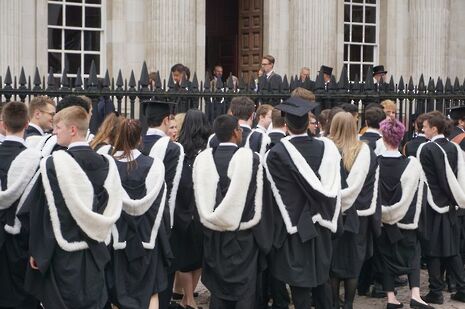University report reveals gender inequalities amid BME and disability progress
The number of BME undergraduates has increased by 2.1 per cent but the gender gap in number of Firsts awarded is 8.9 per cent in favour of men

The University’s Equality and Diversity Information Report, released last week, revealed an increase in representation of BME and disabled students, but showed continuing gaps between men and women in the student body and on the academic staff.
The report, published annually, revealed an increase in the number of BME undergraduates from 23.2 per cent in 2013-14 to 25.3 per cent in 2015-16. Although BME students only made up 20 per cent of all accepted university places, BME students were awarded more Firsts than their fellow students who identify as being of white ethnicity, at 24.3 per cent and 23.2 per cent respectively.
In the report, Vice-Chancellor Sir Leszek Borysiewicz commented that “The University’s diversity plays a key role in sustaining its academic excellence. Cambridge has always thrived by seeking to maintain an open and inclusive multi-national community.” Non-UK nationalities also constituted 34.3 per cent of academic and service staff of known nationality, representing 111 nations.
Students with a disability comprised of 6.9 per cent of total confirmed students, an increase of 0.9 per cent over the past two years. More students with disabilities sought support from University bodies in 2015-16, rising 14 per cent over the past year. This reflects efforts by the University to better represent these students and diminish “any perceived stigma around the disclosure of disability”.
Furthermore, the proportion of male and female students has remained relatively even over a number of years at both undergraduate and postgraduate levels. Female students were more likely to be offered places at the University, making up 49.7 per cent of all admissions despite 55.4 per cent of applications coming from men. However, the percentage of undergraduate women who gained Firsts was considerably lower than their male counterparts, at 22.7 per cent compared with 31.6 per cent, showcasing a gender attainment gap of 8.9 per cent.
While the number of female undergraduates in STEMM (science, technology, engineering, medicine and mathematics) subjects has risen 0.5 per cent since 2013-14, women only constitute 36.1 per cent of all STEMM students, compared to 58.5 per cent in the Arts and Humanities. An admissions gap of 10.4 per cent exists between female and male applicants for STEMM subjects, in comparison to a gap of 7 per cent in the Arts and Humanities.
Professor Eilís Ferran, Pro-Vice-Chancellor for Institutional and International Relations and Chair of the Equality and Diversity Committee, commented that the findings will “inform our activities to promote equality and diversity”, and foster an “inclusive environment for work and study”.
Gender disparity did not prove exclusive to students, with the proportion of women in academic rolls remaining below the average percentage for Russell Group institutions. The report expressed a “focus on developing good practice and positive interventions for female researchers and academics”, however, despite increases over the last three years and the promotion of five women to professorship roles in the last academic year, women currently represent only 35.2 per cent of University lecturers and 18.3 per cent of professors.
The report asserted that 2015/16 was “a period of consolidation to build on our progress so far”, but acknowledged the importance of “identifying new areas of focus in order to develop a high-level five-year equality strategy.”
 Interviews / ‘People just walk away’: the sense of exclusion felt by foundation year students19 April 2024
Interviews / ‘People just walk away’: the sense of exclusion felt by foundation year students19 April 2024 News / Copycat don caught again19 April 2024
News / Copycat don caught again19 April 2024 News / AMES Faculty accused of ‘toxicity’ as dropout and transfer rates remain high 19 April 2024
News / AMES Faculty accused of ‘toxicity’ as dropout and transfer rates remain high 19 April 2024 Theatre / The closest Cambridge comes to a Drama degree 19 April 2024
Theatre / The closest Cambridge comes to a Drama degree 19 April 2024 News / Acting vice-chancellor paid £234,000 for nine month stint19 April 2024
News / Acting vice-chancellor paid £234,000 for nine month stint19 April 2024




